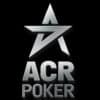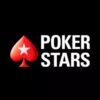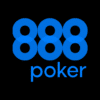In the world of poker, the ability to accurately read your opponents’ hands is a skill that can greatly enhance your game.
To help you sharpen your hand reading skills, this article presents six best techniques that professionals swear by.
From regular practice and studying hand ranges to leveraging player profiling and timing, these strategies will empower you to make more informed decisions at the table.
Additionally, utilizing hand reading software and seeking feedback will further refine your abilities.

Key Takeaways
- Regular practice and engagement in hand reading exercises are essential for improving hand-reading skills.
- Analyzing opponents’ betting and raising frequencies, bet sizes, playing styles, and tendencies can provide valuable insights into their hand ranges.
- Paying attention to timing tells verbal and nonverbal cues, and using player profiling can help accurately assess opponents’ hand ranges.
- Using hand reading software can aid in visualizing different hand ranges, calculating equity, and identifying patterns and leaks in strategy.
Practice regularly
Consistent practice is essential for enhancing hand reading skills.
To improve your ability to read hands, it is crucial to engage in various hand reading exercises. These exercises can involve mental visualization, where you imagine different hand scenarios and try to determine the range of possible hands your opponents might hold.
Additionally, you can challenge yourself by participating in hand reading challenges, quizzes, and simulations. These activities test your understanding of hand ranges and help you develop a more accurate read on your opponents.
By regularly practicing these techniques, you will sharpen your hand reading skills and become more proficient at making informed decisions at the poker table.
Study hand ranges
To further develop your hand reading skills, it is essential to study hand ranges. Analyzing patterns, understanding bet sizing, considering board texture, incorporating opponent tendencies, and utilizing range-narrowing techniques are key to consider when looking at hand ranges.

One effective way to analyze hand ranges is by observing your opponents’ betting patterns and raising frequencies. By paying attention to their actions in different situations, you can start to identify the range of hands they are likely to have.
Understanding bet sizing is also crucial when studying hand ranges. Different bet sizes can indicate different hand strengths, and by analyzing your opponents’ bet sizes, you can gain valuable insights into their hand ranges.
Another factor to consider is the board texture. The community cards’ texture can significantly influence your opponents’ possible hand ranges. By analyzing how the board interacts with their likely ranges, you can make more accurate hand reading decisions.
Incorporating opponent tendencies is another crucial aspect of studying hand ranges. By observing your opponents’ playing styles and tendencies, you can make more accurate assumptions about their hand ranges in different situations.
Finally, utilizing range narrowing techniques can help you further refine your hand reading skills. By considering your opponents’ actions and range of hands at each betting round, you can narrow down their possible hand ranges and make more precise decisions.
To summarize, studying hand ranges involves analyzing patterns, understanding bet sizing, considering board texture, incorporating opponent tendencies, and utilizing range narrowing techniques. Focusing on these aspects can enhance your hand reading skills and make more informed decisions at the poker table.
| Aspect | Description |
|---|---|
| Analyze patterns | Observe opponents’ betting and raising frequencies for hand range insights |
| Understand bet sizing | Analyze opponents’ bet sizes to gain insights into their hand ranges |
| Consider board texture | Evaluate how the community cards interact with opponents’ possible ranges |
| Incorporate opponent tendencies | Observe opponents’ playing style and tendencies to make accurate assumptions |
| Utilize range-narrowing techniques | Narrow down opponents’ possible ranges based on their actions and hand range at each betting round |
Use player profiling
Player profiling is an essential technique for improving hand reading skills. Players can gain valuable insights into their playing style by observing opponents’ actions and noting their tendencies. Here are some strategies to effectively utilize player profiling:
Observation skills:
- Watch how opponents approach different situations, such as betting and raising patterns.
- Look for patterns in their folding tendencies and consider factors like table position and stack size.
Note-taking strategies:
- Keep detailed notes on opponents’ playing style, including any specific tendencies or patterns you have observed.
- Use shorthand or symbols to quickly reference important information during gameplay.
- Exploiting player tendencies:
- Use the knowledge gained from player profiling to exploit opponents’ weaknesses and make more informed decisions.
Pay attention to timing tells
Regularly observe the timing of players’ actions to enhance hand reading skills. Timing patterns can provide valuable insights into the strength or weakness of a player’s hand. Quick actions, such as fast bets or snap calls, often indicate confidence and strong hands, while longer pauses may indicate uncertainty or weakness. By paying attention to timing tells, you can gain an advantage in understanding your opponents’ holdings. Additionally, consider how bet sizing can correlate with timing. Large bets made quickly may indicate a strong hand, while small bets made after a long pause may signify a bluff. Furthermore, watch for verbal cues or nonverbal cues that players may exhibit during their decision-making process. Lastly, factor in the overall table dynamics, as different players may have different timing patterns and tendencies.
The following table provides an overview of timing tells and its potential meanings:
| Timing Patterns | Possible Interpretation |
|---|---|
| Quick actions | Confidence, strong hand |
| Longer pauses | Uncertainty, weakness |
| Large bets made quickly | Strong hand |
| Small bets after long pause | Bluff |
| Verbal cues | Additional information |
| Nonverbal cues | Body language signals |
| Table dynamics | Player tendencies |
Use hand reading software
Utilize hand reading software as an essential tool for enhancing your hand-reading skills. Hand reading software offers various features that can help improve your understanding and analysis of hand ranges.

Here are three key benefits of using hand reading software:
- Hand range analysis: The software allows you to analyze and visualize different hand ranges, helping you understand the range of hands your opponents may have.
- Equity calculations: With the software, you can calculate the equity of your hand against different ranges, enabling you to make more informed decisions during gameplay.
- Hand history review: By reviewing your hand history with the software, you can identify patterns, spot leaks in your strategy, and make adjustments to improve your overall hand reading skills.
Moreover, the software enables you to input different hand ranges and compare them to observed outcomes, allowing you to refine your hand reading abilities. With these features, hand reading software becomes an invaluable asset in your quest to become a more proficient hand reader.
Seek feedback and review
To enhance your hand reading skills, seeking feedback and regularly reviewing your performance is crucial. This involves asking questions, engaging in active listening, practicing reflective thinking, seeking different perspectives, and incorporating feedback.
When seeking feedback, it is essential to ask specific questions about your hand reading techniques and strategies. Actively listen to the feedback provided by more experienced players or poker coaches and consider their perspectives to gain new insights.
Reflective thinking allows you to analyze your gameplay sessions and identify areas for improvement. By incorporating feedback into your practice, you can refine your hand reading skills and more accurately assess your opponents’ hands.
Seeking feedback and regularly reviewing your performance will help you continuously improve and excel in hand reading.
Conclusion
In conclusion, improving hand reading skills in poker requires consistent practice, studying hand ranges, using player profiling techniques, paying attention to timing tells, utilizing hand reading software, and seeking feedback and review.
By implementing these techniques, players can enhance their ability to accurately assess opponents’ hands accurately, leading to better decision-making and overall success in the game.


















